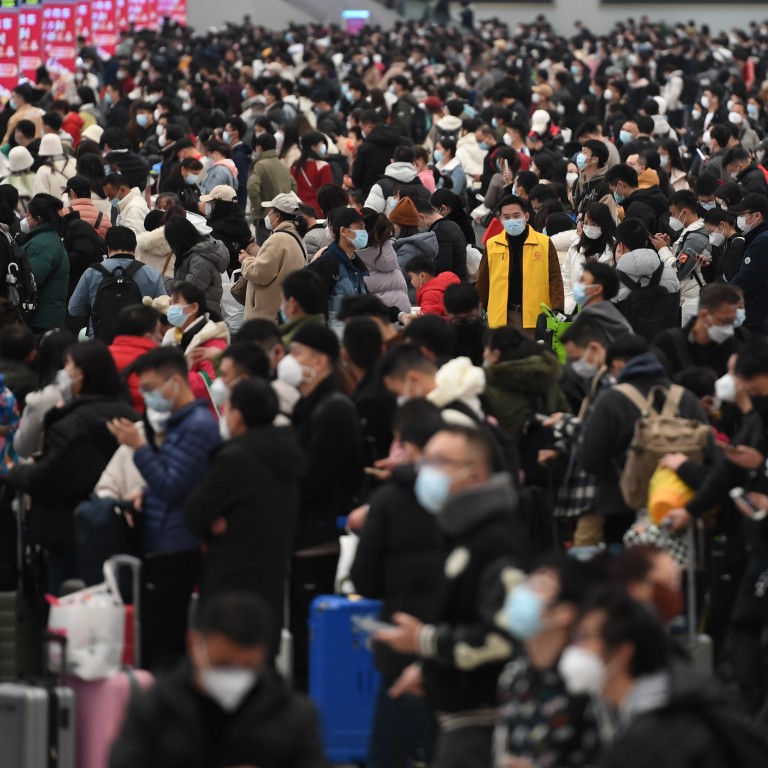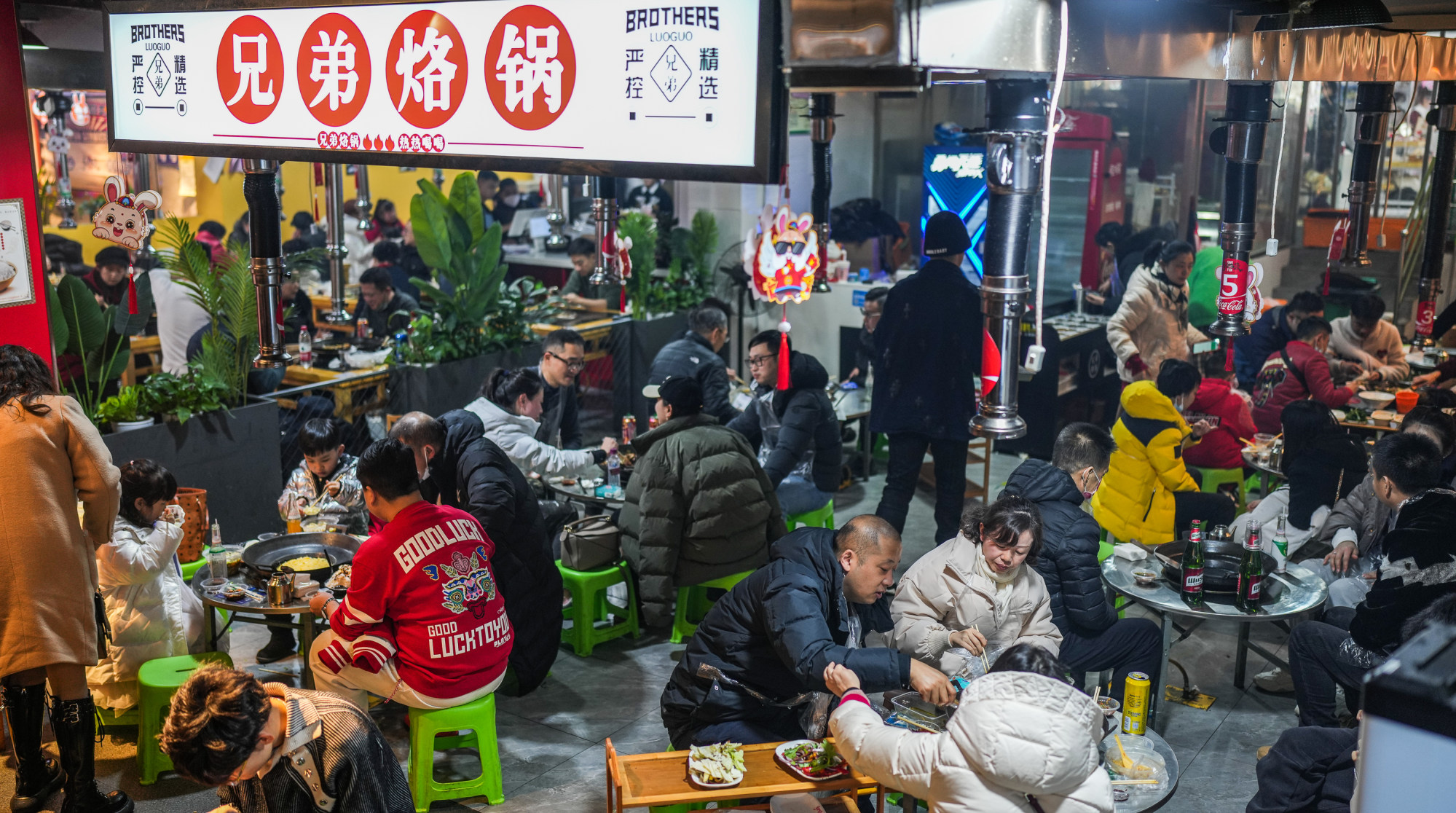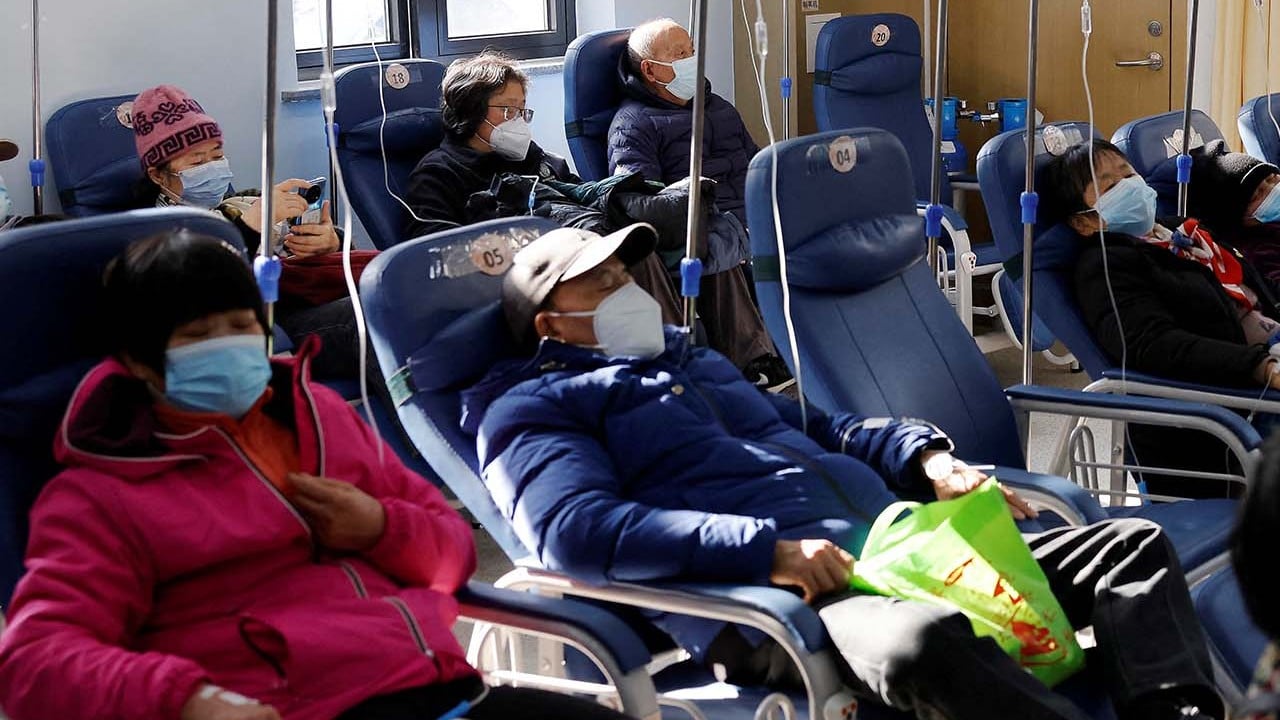
After zero-Covid: what now for China following massive wave of infection?
- By last month, about 58 per cent of China’s population had received one booster shot
- But daily jabs tally has fallen to around 96,000, down from 3.635 million in December
But as vaccination momentum declines, some remain concerned about the susceptibility of elderly people to increasingly transmissible variants of the coronavirus that causes Covid-19.
Demand for treatment at Chinese fever clinics peaked on December 23 and remained at a low level late last month, according to official statistics, while the number of Covid-19 patients admitted to hospitals peaked on January 5 and had since declined consistently.
“Our nationwide immunity is now at a high level, so there is little chance for another wave to occur in the coming few months,” the chief epidemiologist at the Chinese Centre for Disease Control and Prevention, Wu Zunyou, said on Thursday.
He said the coronavirus had been mutating but there was a low possibility that new strains or subvariants would be more transmissible or deadly than the current ones.
“I would not bet too much on the putative protective role of the herd immunity in China against a new wave of infections with any new subvariant of Omicron,” said Antoine Flahault, director of the Institute of Global Health at the University of Geneva.
It was hard to tell whether the highly transmissible strains detected recently would come to be dominant, he said, but it was highly probable that China would see a series of Omicron waves similar to that in western Europe, and the simultaneous circulation of multiple subvariants was also possible in a country as large as China.
China’s long-term future with Covid-19 will depend on accurate data
Given the very large number of infections in China this winter, which had increased population immunity against severe disease, the rate of severe cases was likely to be much lower in subsequent waves, said Ben Cowling, the chair professor of epidemiology at the University of Hong Kong.
By last month, about 58 per cent of China’s population had received one booster shot, with the number rising to about 73 per cent among the roughly 260 million people aged over 60. About 90 per cent of China’s 1.4 billion population is vaccinated, but most had their first two doses over a year ago.
Generally, protection against infection lasted for three to six months, while protection against severe symptoms could last for years, Cowling said.
He said younger people had a very low risk of severe Covid-19, even if they were unvaccinated. But for older people, even those who had received a third or fourth jab some time ago, the risk of severe Covid-19 was much higher.
Why zero-Covid is harder to leave behind than to enforce
“Booster doses should be offered to older adults every six to 12 months to minimise the risk of severe Covid as much as possible,” Cowling said.
Xi Chen, an associate professor of public health at Yale University in the United States said some momentum for vaccination had been built since the abandonment of zero-Covid, “largely due to fear and the sense of urgency from both the supply and demand sides”.
That had pushed the number of doses administered in a day to a peak of 3.635 million on December 21, but it declined to around 33,000 late last month, in the first week of Lunar New Year.
It rose to about 96,000 last week, according to official data, but that was still the second lowest figure in the past two months.

Once people caught Covid-19, the momentum for vaccination declined, Chen said, but China had a large population to vaccinate and as the virus kept mutating to evade immunity, the country needed to be prepared for other possible waves.
He said China should prioritise vaccination and boosters for the nearly 20 per cent population – about 280 million people – who might have hunkered down to avoid infection.
Chen said that while he had seen no data on the medical history of that uninfected population, “anecdotal evidence suggests that they tend to be older, more likely to be immune compromised, and have multiple conditions”. He said such people had tended to avoid infection in earlier waves in most countries.
“After that, priority should be given to those who were infected or received their last dose more than six months ago,” he said, noting that the efficacy of China’s inactivated vaccines waned after three to six months.
Immune imprinting makes some Covid-19 booster shots less effective: study
Yanzhong Huang, director of the Centre for Global Health Studies at Seton Hall University in the US, said he had not seen the central government launch any vaccination campaigns after the wave late last year and vaccination did not appear to be among its priorities.
“When rapid economic recovery is becoming a priority … I can see how vaccination becomes a back-burner issue,” Huang said. “It’s up to the local governments to decide whether they are going to invest in the vaccination campaigns.”
But he said local governments also seemed to be preoccupied with promoting economic growth rather than vaccination and, with lingering concerns about vaccine safety and efficacy, it would take “another campaign from the central level to increase the vaccination rate among the elderly”.
Although the coming waves were expected to be smaller, the situation could still be worrying, as had been seen in Covid-19 fatalities in Hong Kong, Huang said.
“People continued to die during the second and third viral waves, even though the viral waves were smaller than the first one,” he said.
China’s Covid deaths down almost 90 per cent since infection peak: report
With both inactivated and activated vaccine options available in Hong Kong, statistics also showed a generally higher fatality rate among those who received the major Chinese vaccine, CoronaVac, rather than Pfizer’s BioNTech mRNA vaccine.
But in terms of the prevention of severe or fatal Covid-19 outcomes, an HKU study found that third doses of either provided more than 95 per cent protection.
As antibodies waned more quickly after three months in recipients of Chinese inactivated vaccines, there was still a need for China to speed up approval of mRNA vaccines and Omicron-specific vaccines, HKU virologist Jin Dongyan said.
“China was too slow in the administrative process. Vaccines can actually be made, but they have not been approved for emergency use,” he said, adding that new versions of inactivated vaccines could be made more easily and quickly.
“China has to catch up with what others have been doing,” he said.
The two major vaccines used in China – CoronaVac and Sinopharm – were approved in late 2020 to early 2021 and developed to target the original strain of the Covid-19 virus.
Following three years of mutation, countries like Singapore, the United Kingdom and the US have approved bivalent jabs that recognise the spike protein on the surface of the newer Omicron variant.
At least six Chinese mRNA vaccines have been approved for clinical or overseas trials for months, but none have received approval to be administered in China.


.jpg?itok=qK7RpETx)
